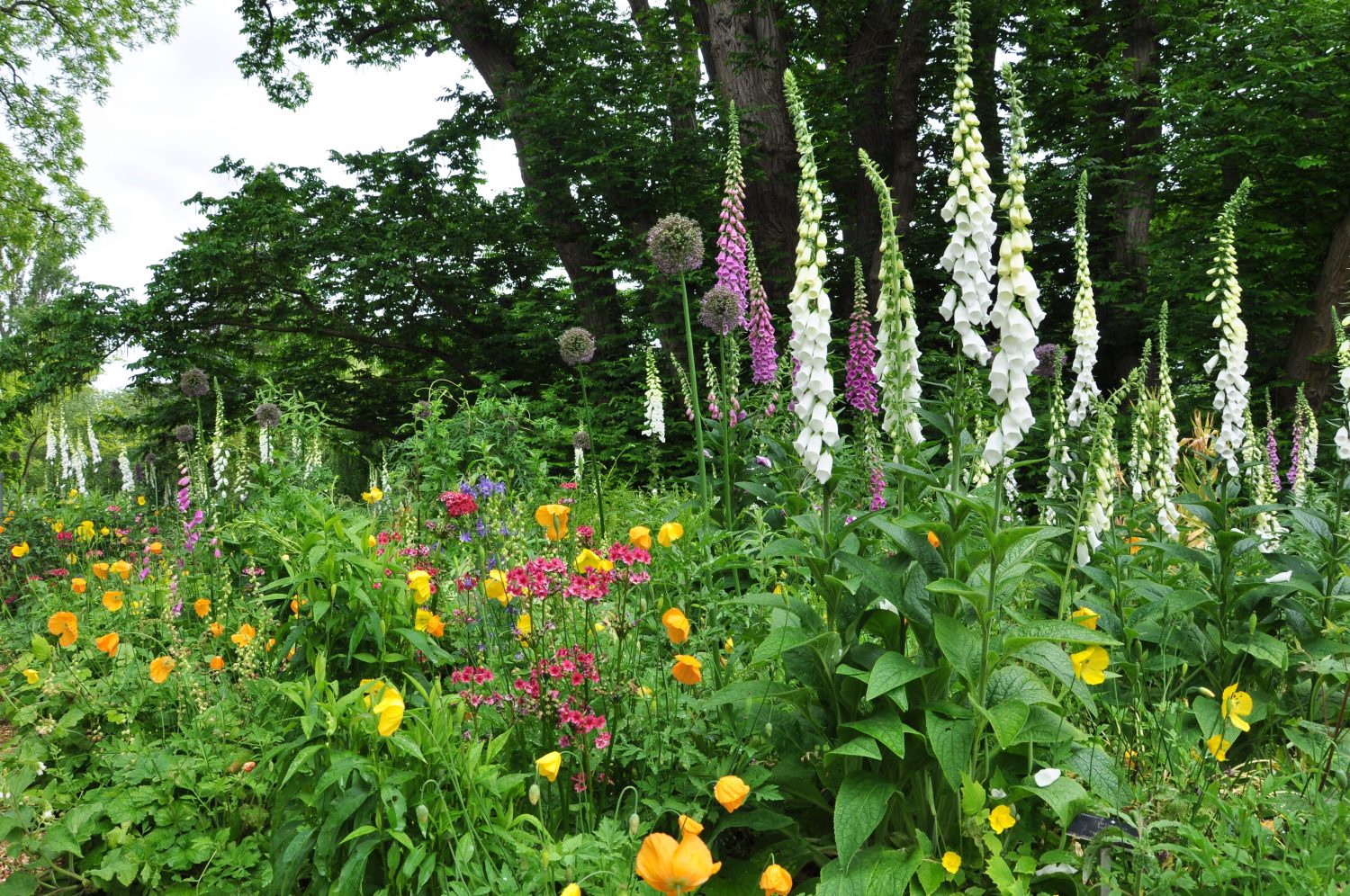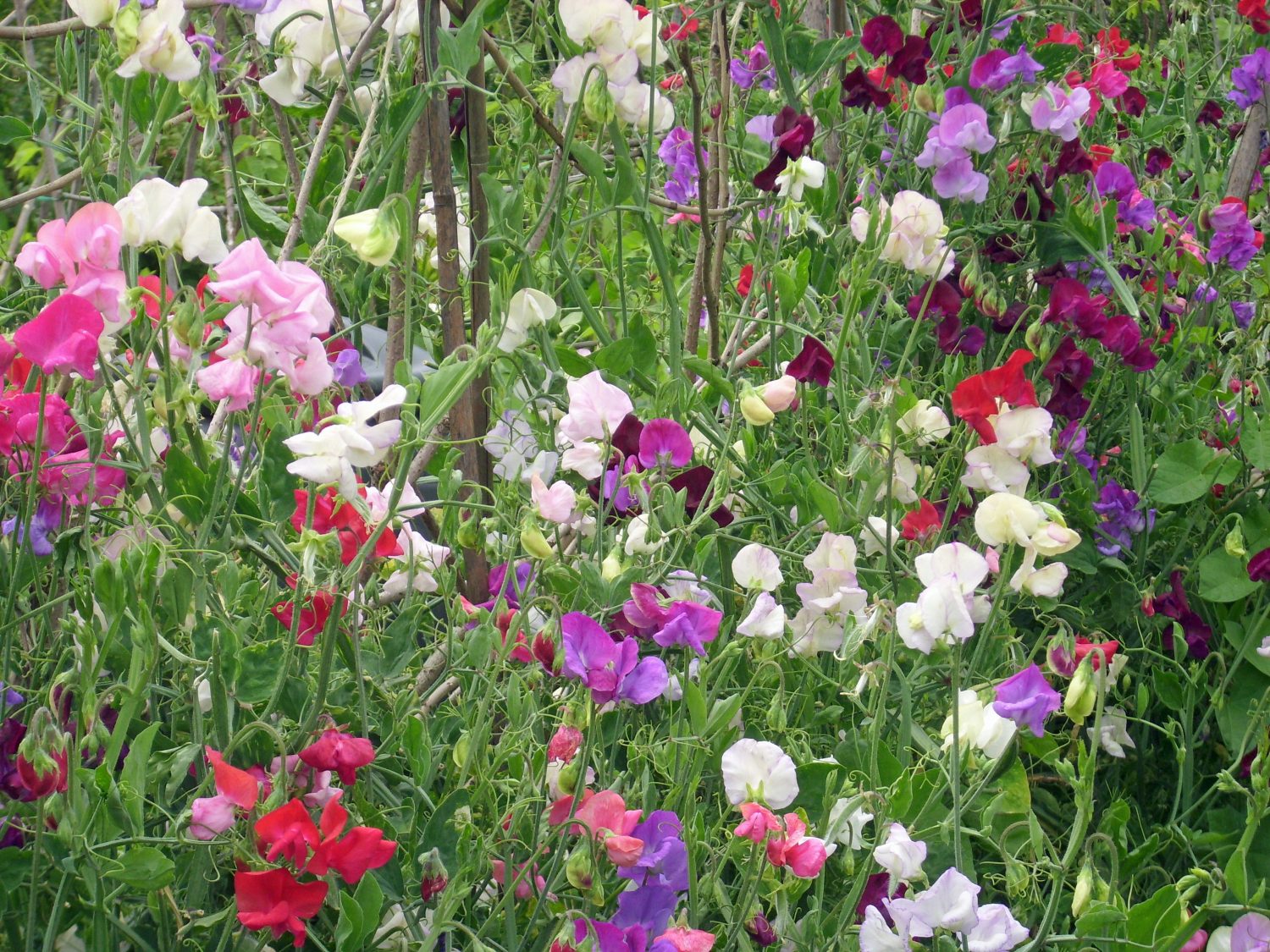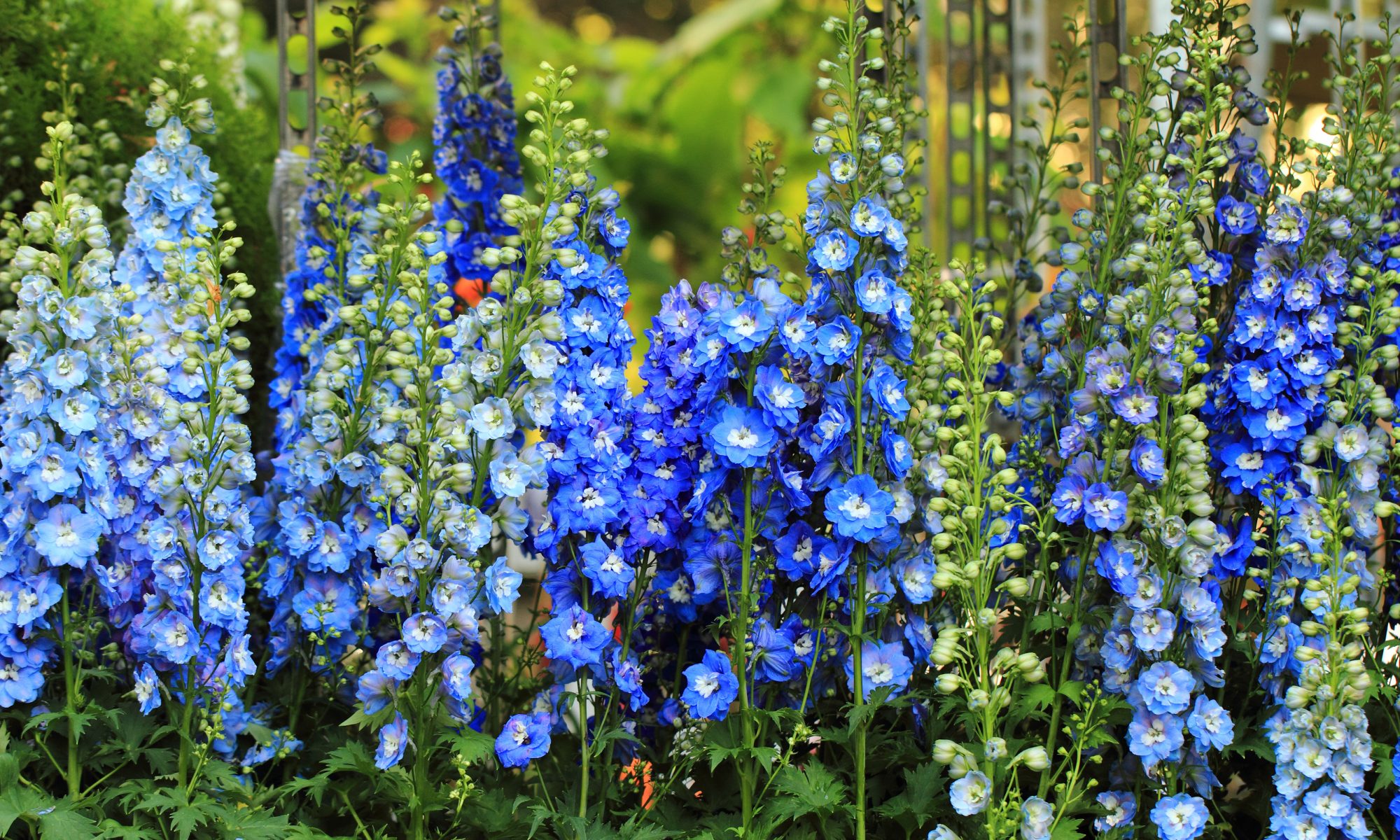Jo Arnell explains how to create your very own country haven with cottage garden plants for a dreamy summer look
Arches festooned with romantically billowing roses, paths lined with lavender and borders bursting with colourful perennials, the cottage garden is an archetypal summer scene, a dreamy place that many of us try to cultivate. But achieving that effortless charm and abundance is not always as easy as it looks. You may have noticed that some plants do better than others, some take over, while others fade away or are swamped by their bullying neighbours. It may look beautiful and benign out there, but even the plants are fighting for territory. To help maintain a harmonious balance we must try to understand a little more about them, where they have come from and where they will be happiest in our gardens.

Cottage garden plants tend to be old-fashioned favourites – you only have to think of a few of their names – granny’s bonnets, Hattie’s pincushions, lady’s mantle – to realise that they’ve been around for a long time. The line between cottage garden plants, wildflowers and – sorry to say it – weeds, is a blurry one. Some of our longstanding garden plants started off as meadow plants that were adopted into domestic spaces.
Each has evolved to suit a niche and they often let us know where they’ll be happiest – by turning up their toes when planted in the wrong place, or self seeding their way to a better position.
Roses
Whether you are growing them around the door in true cottage garden style, or as part of a mixed border, roses are one of the most romantic border components. The trick with these beauties is to choose a good variety, so that probably means a modern hybrid, preferably one that will repeat flower all summer (keep deadheading though) and is disease resistant – but not at the expense of scent please, as a rose without scent is only half a rose in my book. Make your choice from the ranges at specialist rose growers, such as David Austin, Peter Beales or Trevor White. If possible buy and plant roses as bare roots in the dormant season. This way they will get the chance to establish a good root system before the pressure is on to grow leaves and flowers.
Perennials
Perennials are the stalwarts of the borders, coming back year after year and putting on a colourful show of flowers whatever the weather. The cottage garden perennials tend to be robust plants, able to compete with one another and hold their own against most of the weeds. They form large clumps quite quickly, and in order to keep them looking their best will need to be lifted and divided every few years.
They suffer from few health problems, although stately delphiniums and lupins are prone to being eaten by slugs as the young foliage emerges in spring and lupins come under further attack later on once the flower spike has grown from the occasional plague of woolly grey aphids. Be vigilant and try to catch the first few greenfly (greyfly?) that land on the plant, or summon the services of your local blue tits, who like nothing better than a juicy aphid or two.
Remember also to stake tall plants like delphiniums – and do this early on in the season. Delphiniums are majestic plants and look a bit drunk and disorderly when propped up after they have keeled over.
Opportunists
One of the great joys of a cottage garden is the relaxed and informal way that plants meander through the garden, placing themselves serendipitously where we might not think of planting them and looking all the better for it. This slightly untamed look is very hard to achieve deliberately, mainly because of their wilful refusal to thrive where we want them to grow. Self-seeders like aquilegias, valerian, achemilla, sisyrinchium, hollyhocks and foxgloves tend to grow in odd places – under hedges, in paving cracks and ledges; softening and prettifying at the edges of paths and buildings to create an air of carefree naturalness and ease. The flip-side of this is a riot of unruly invaders that have to be kept in bounds – as already noted, the line between some of our cottage garden favourites and weeds is a blurry one. They just won’t stay where we would like them to – and often either give up, or set up home in another place, probably in a neighbour’s garden.

Sun stars and shade lovers
Light levels vary through the year – and through the day, and here in the northern hemisphere the number of daylight hours reach their maximum in midsummer. Dawns are early and dusk is late and the sun is overhead casting fewer shadows. It’s no coincidence that everything rushes to flower at this time of the year – the plants and the animals are in tune with the movement of the sun and the summer solstice is a significant and pivotal moment in the natural world.
Most of our cottage garden perennials thrive in bright sunshine, but there are quite a few that will be happier in shadier spots. Biennials like honesty, foxgloves and forget-me-nots have found a niche under deciduous trees and hedgerows, seizing their moment and flowering early before the canopy of leaves appears overhead. Several perennials – Alchemilla mollis, Aconitum (monkshood), Polygonatum (Soloman’s seal), Dicentra (bleeding heart – annoyingly renamed lamprocapnos) and Polonium (Jacob’s ladder) prefer to grow in shade.
Depending on the orientation of our home, neighbouring buildings and boundaries, our gardens are plunged into shade for parts of the day. It’s worth watching how the sun moves across a border or section of the garden and working out roughly how shady or sunny it is. Sun lovers like lavender and roses need between six to eight hours of full sun each day in order to keep them flourishing, but many perennials will put up with semi–shaded conditions, although they may be less floriferous – and will often try to migrate to the sunny side of the plot by stealth.
Extending the season
The glorious June moment is over all too soon and, just when summer is getting into its stride and we are planning lunches and events in the garden, the flowers all seem to disappear. It is very annoying, but fear not, there are some tricks that we can employ to keep the cottage garden moment lasting for the whole of the summer.
Once flowers like delphiniums, lupins and geraniums have finished, give them all a really hard haircut – right down to the ground – and they will grow back neatly and flower again in late summer (this is especially good for straggly old geraniums). Deadhead anything else – roses, spire forming salvias, phlox, geum etc. and they will keep on flowering.
Planting annuals in border gaps, or in spaces where spring bulbs were, is another great way to extend the season. Annuals are wonderful – fast growing, cheerful and floriferous – and they are so useful as a flowery bridge between the traditional cottage garden perennials and later flowers. Remember to keep deadheading them though – if they get the chance to set seed, they’ll think that their job is done and will pack up and disappear. Sweet peas, cosmos, nicotiana and antirrhinums are among my favourite annuals, because they are easy to grow from seed and stay looking good for most of the summer – and often into the late autumn.
“Sweet peas are among my favourite annuals, because they are easy to grow from seed and stay looking good for most of the summer – and often into the late autumn“
Look out for plants that flower later in the summer. Nearer the equator the plants are not so much governed by the seasons as by the warmth of the sun and the arrival of rains. Dahlias, salvias and agapanthus will provide a welcome splash of colour and will work well in all sorts of planting schemes, from cottage to exotic.
Daisies are also in abundance in August and September, starting with sunflowers (Helianthus) and close neighbours, heleniums. These are available in a range of colours from palest cream or lemon yellow through to warm oranges and rich earthy reds and browns. I try to grow as many sunflowers as I can, both perennial and annual. The annuals are great for providing sunflower seeds for the birds in the autumn, but they have to run the gauntlet of attack by mice and slugs if sown directly into the soil. Echinaceas, rudbeckias and asters are also on offer in late summer. The colour range is extended into pinks, blues and mauves with some of these daisies, so that border schemes can stay cool, calm and collected, although a true cottage garden should perhaps celebrate all colours in a joyful jumble.
This is a great time of the year to get out and about visiting lovely cottage gardens, both large and small, as so many are open to the public. Those on a more domestic scale may well provide lots of inspiration and ideas too, so seize the moment, go outside and enjoy the heart lifting cheerful abundance of the cottage garden season.
Jo is running Border Design courses from her garden in Woodchurch. Find out more and book at hornbrookmanor.co.uk.
You may also like
In the Night Garden
Jo Arnell explains how to make the most of your outdoor space once darkness falls Some enchanted evening you may see me outside – mainly searching for slugs in the garden, because the cool hours of night are when they...
Contain your excitement
Jen Stuart-Smith discusses how to get creative with your pots and planters My love affair with plants started with houseplants when I was a child. As my bedroom windowsill overflowed – resulting, occasionally, in waking up with compost under my...
More than just a pretty face
Jen Stuart-Smith explores the multiple uses of some easy-to-grow garden favourites When you grow flowers for their beauty, shape and colour it can be easy to forget all the other qualities they have to offer. Some are edible, others provide...










